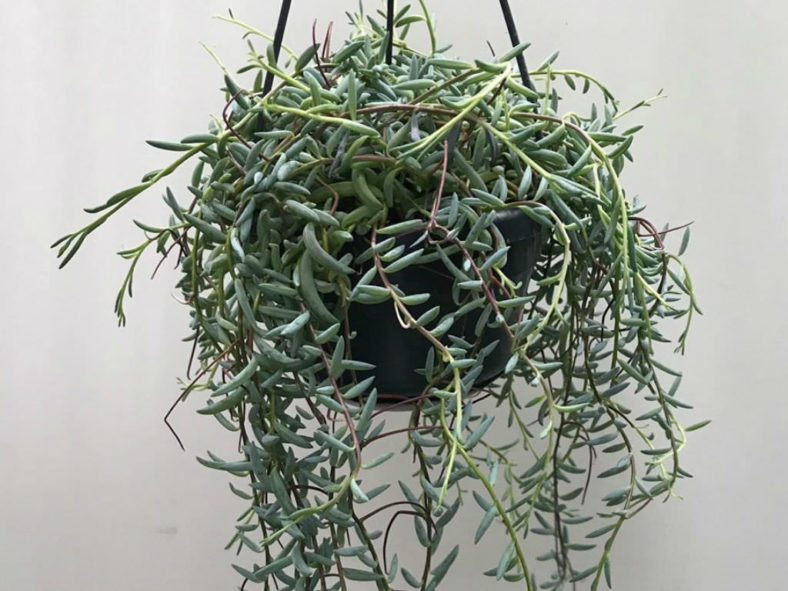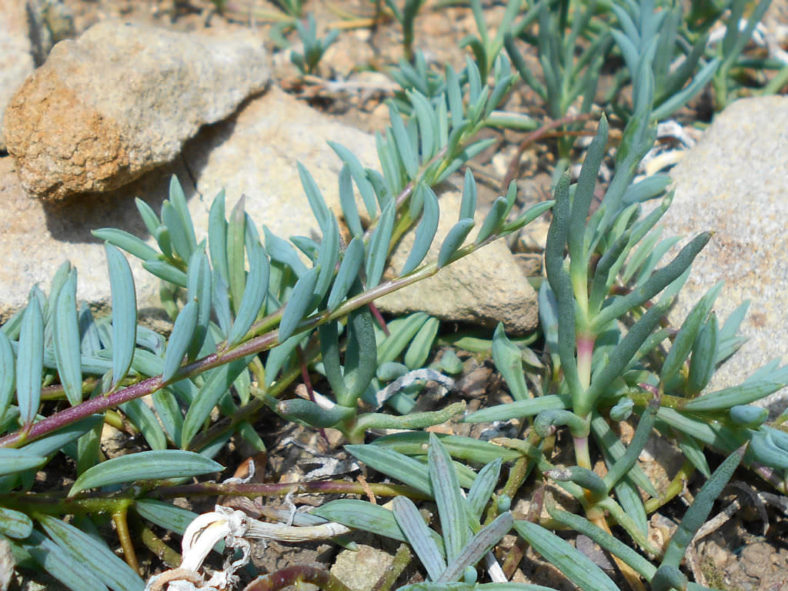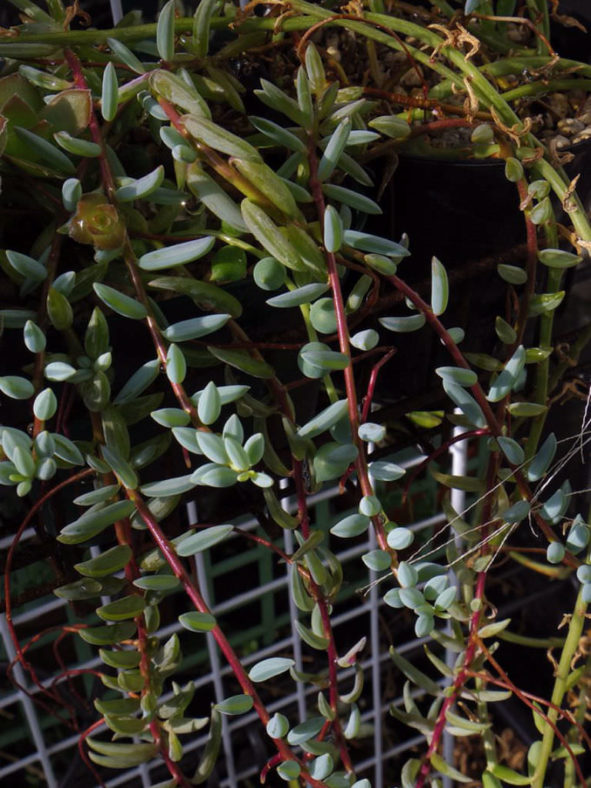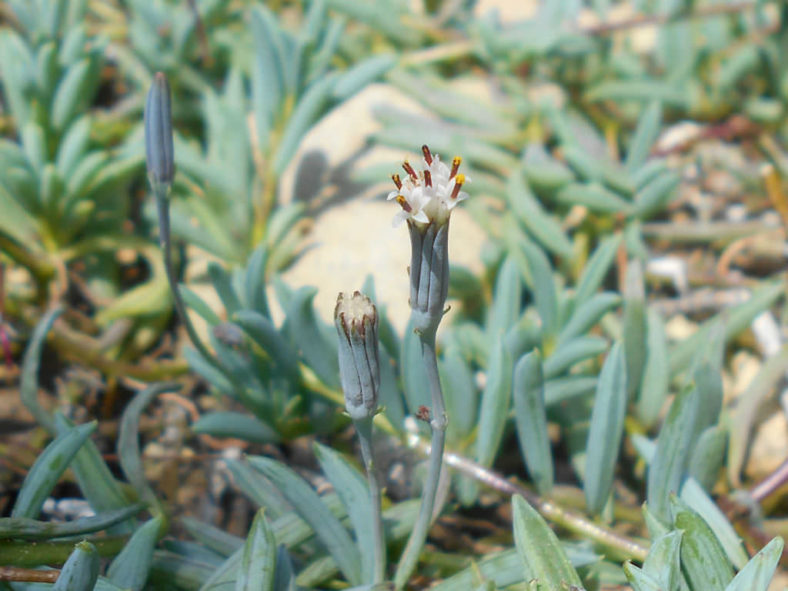Scientific Name
Curio hallianus (G.D.Rowley) P.V.Heath
Synonym(s)
Senecio hallianus
Scientific Classification
Family: Asteraceae
Subfamily: Asteroideae
Tribe: Senecioneae
Subtribe: Senecioninae
Genus: Curio
Etymology
The specific epithet "hallianus (hal-lee-AY-nus)" honors Harry Hall (1906-1986), a British-born horticulturist, botanist, and succulent plant authority.
Origin
Curio hallianus is native to South Africa (Western Cape).
Description
Curio hallianus, formerly known as Senecio hallianus, is a small succulent with thick, fleshy, erect or inclined leaves on stems that creep along the ground or trail out of the pot. It forms mats by suckers and runners. The leaves are tapered at both ends, measuring up to 1 inch (2.5 cm) long and 0.2 inches (0.5 cm) in diameter. They are blue-green, covered with a powdery bloom, and have 10 to 14 somewhat translucent stripes.
The white flowers appear on thin stems that can grow up to 4 inches (10 cm) long, usually in summer.

How to Grow and Care for Curio hallianus
Light: Keep Curio plants in partial shade if outdoors, which is their preference in summer, and bright sunlight if indoors. They will grow in full shade but will become lank and leggy.
Soil: These plants prefer well-draining soil. For growing Curio indoors, using a container with at least one drainage hole at the bottom is essential.
Hardiness: Curio hallianus can withstand temperatures as low as 30 to 50 °F (-1.1 to 10 °C), USDA hardiness zones 10a to 11b.
Watering: Curio plants are drought tolerant, but the soil should never be left dry for too long. They need some water during the growing season, but be careful not to leave the soil wet for prolonged periods.
Fertilizing: The members of this genus can take a bit more fertilizer than other succulents if you want them to grow fast.
Repotting: You do not need to repot Curio plants often. You can do it when the container becomes too small or shallow.
Propagation: These plants can be grown from seeds or cuttings.
Learn more at How to Grow and Care for Curio.
Toxicity of Curio hallianus
Curio plants are toxic. Grow them with great care if you have children, pets, or livestock.
Links
- Back to genus Curio
- Succupedia: Browse succulents by Scientific Name, Common Name, Genus, Family, USDA Hardiness Zone, Origin, or cacti by Genus
Photo Gallery
Click on a photo to see a larger version.



